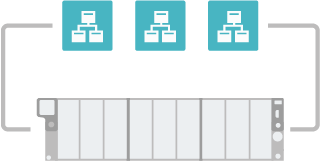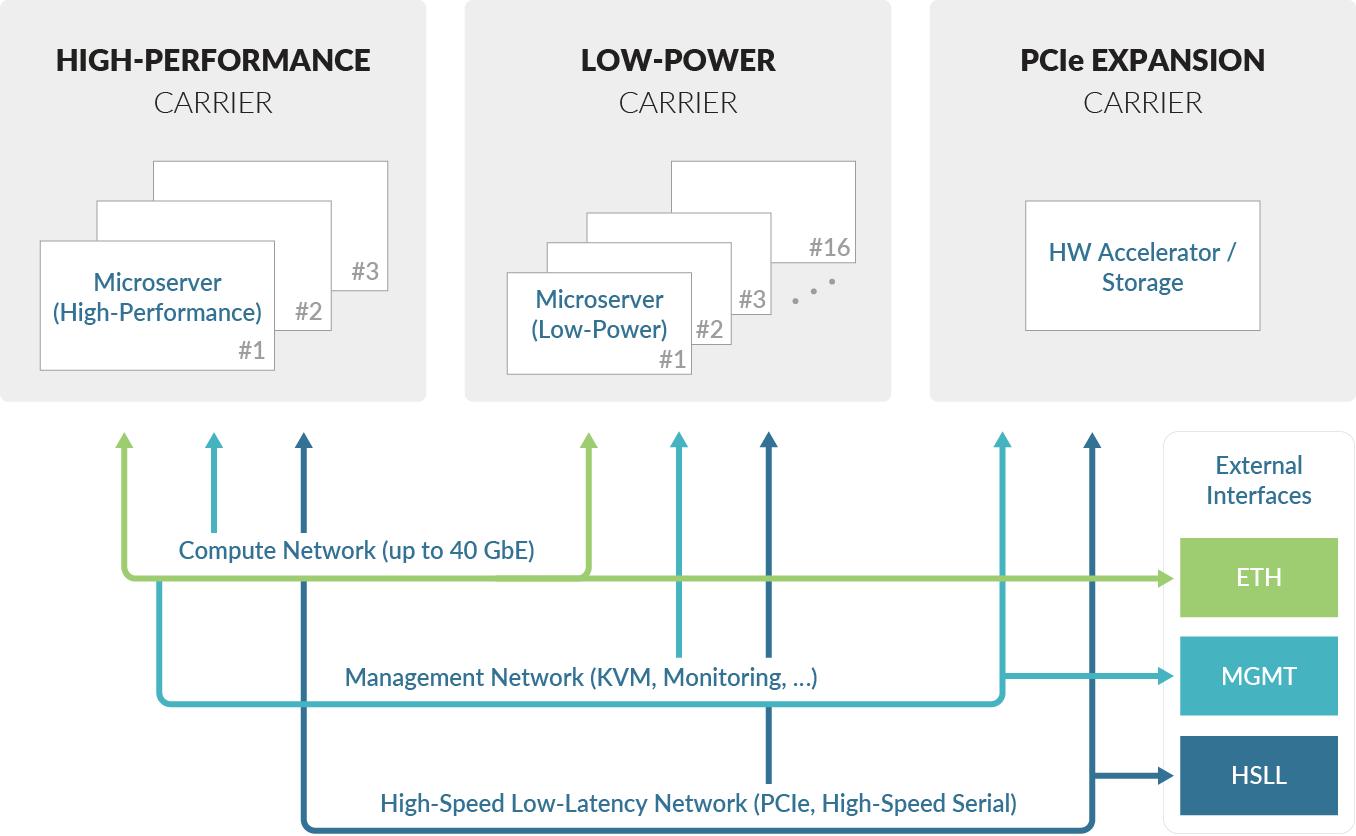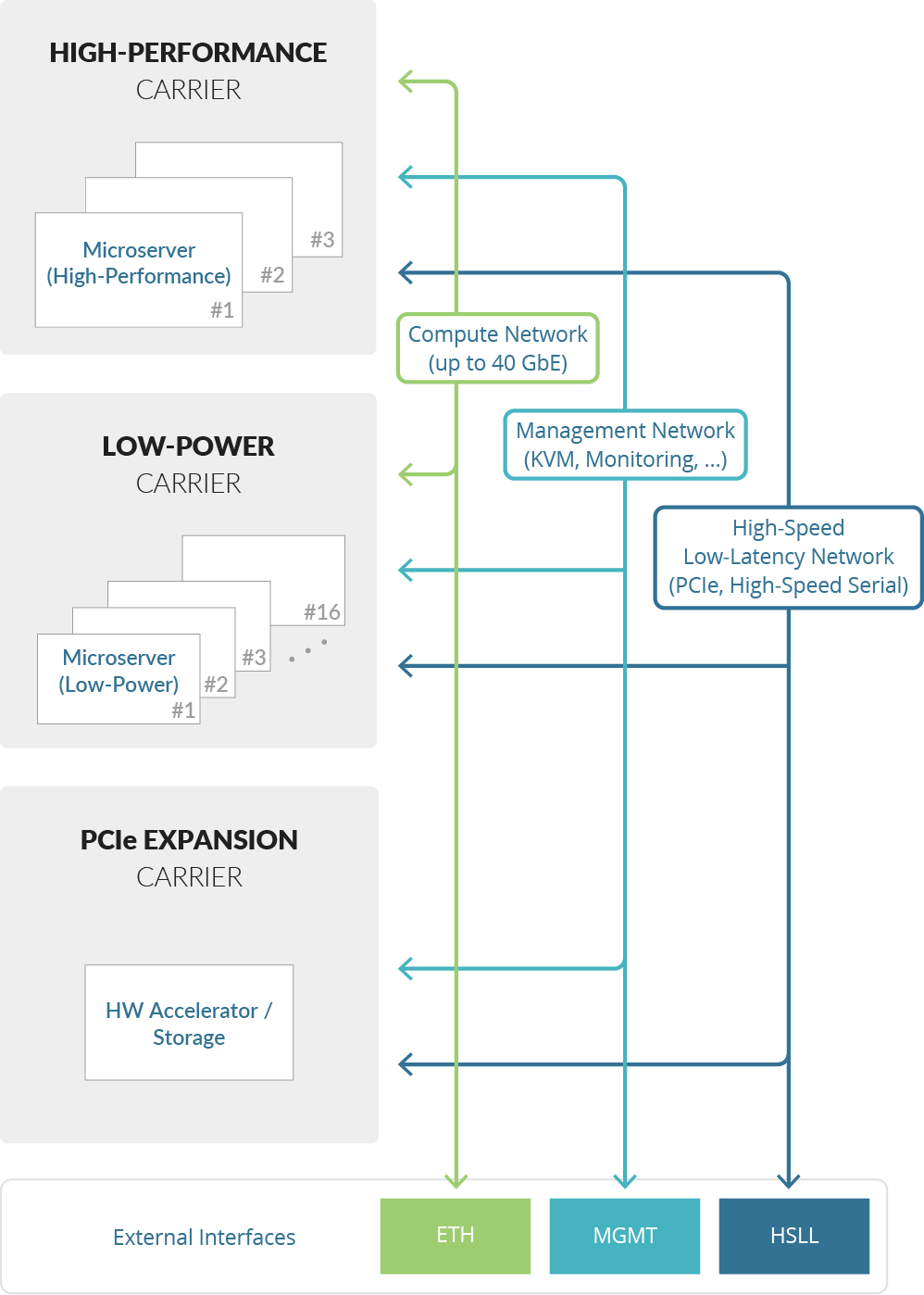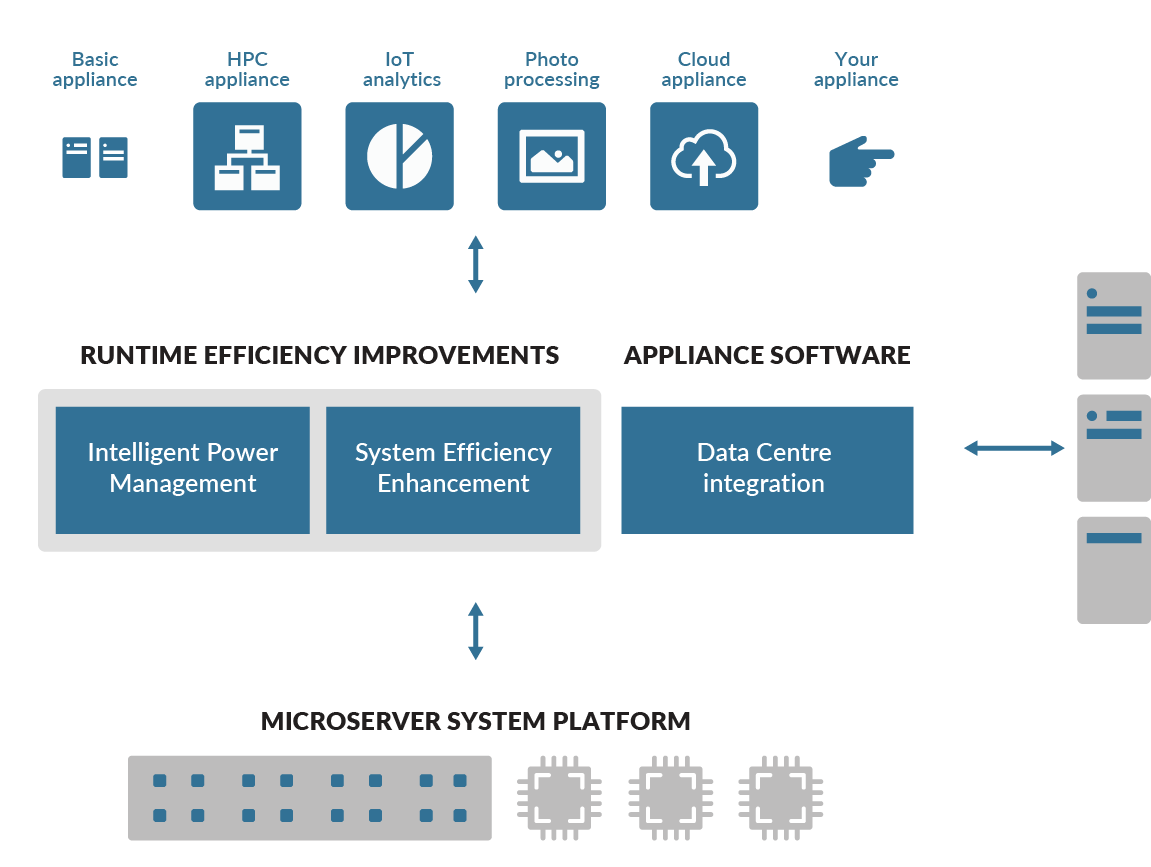Objectives
M2DC is developing turnkey appliances based on a microserver system enabling to build use-case driven, modular, high-density data centres. The idea is to provide use cases in the form of turnkey appliances which can be easily configured, produced, installed and maintained. Thus, the main M2DC goal is to deliver a new class of appliances with the following properties:

[O1] Development of the new class of appliances with minimised Total Cost of Ownership
M2DC will deliver appliances that will provide significantly lower costs in terms of combined CAPEX (Capital Expenditures) and OPEX (Operating Expense) for data centres. Target: Costs for application users within the project should be reduced by a factor of 2.

[O2] Reduction of energy consumed by the appliances
M2DC Appliances will use next-generation microserver modules based on latest low-power heterogeneous SoCs coming from server or mobile and embedded markets. Their smart integration in a heterogeneous system including resources such as x86, GPU or FPGA-based.

[O3] Development of built-in dependability functions
M2DC appliances will include dependability features by design. This objective will be achieved by integration of built-in hardware-supported monitoring and management features, fast and efficient techniques for pattern matching in order to prevent failures and security.

[O4] Versatility, customisation and scalability thanks to fully software-defined design
Appliances will allow dynamic customisation to specific application workloads including their built-in functions and communication, power and thermal management (power & temperature caps, energy budgets) features. First, M2DC will.

[O5] Intelligent power management
M2DC will achieve additional significant improvements in efficiency by integrating software and hardware techniques at various levels including: hardware-assisted system efficiency enhancements, taking advantage of novel fine-grained virtualisation techniques, optimal mapping to.

[O6] Easy and powerful integration with existing data centre ecosystems
M2DC appliances will enable dynamic management and scalability by easy adaptation to an existing data centre eco-system as well as cloud and HPC systems. This integration will provide flexibility; easy deployment, provisioning, and maintenance; precise and dynamic control of.

[O7] Enabling easy adoption of cutting-edge hardware technologies for selected applications
In addition to the latest ARM-based server and embedded processors at the latest technology nodes, M2DC will apply cutting-edge solutions such as reconfigurable hardware and HMC memory based on 3D-stacking, optical interconnects, and new.

[O8] Demonstration of appliances for a broad set of relevant applications
One of the main challenges when designing a heterogeneous low-power system using computing resources such as ARM-based SoCs and accelerators is to identify the proper configuration of the system with respect to applications. Another challenge is to port the.
These objectives will enable M2DC to:
• reduce TCO for selected applications and use cases by 50% compared to other servers,
• improve energy-efficiency by 10-100 times, compared to 2013 typical servers depending on selected system configuration and application.
























